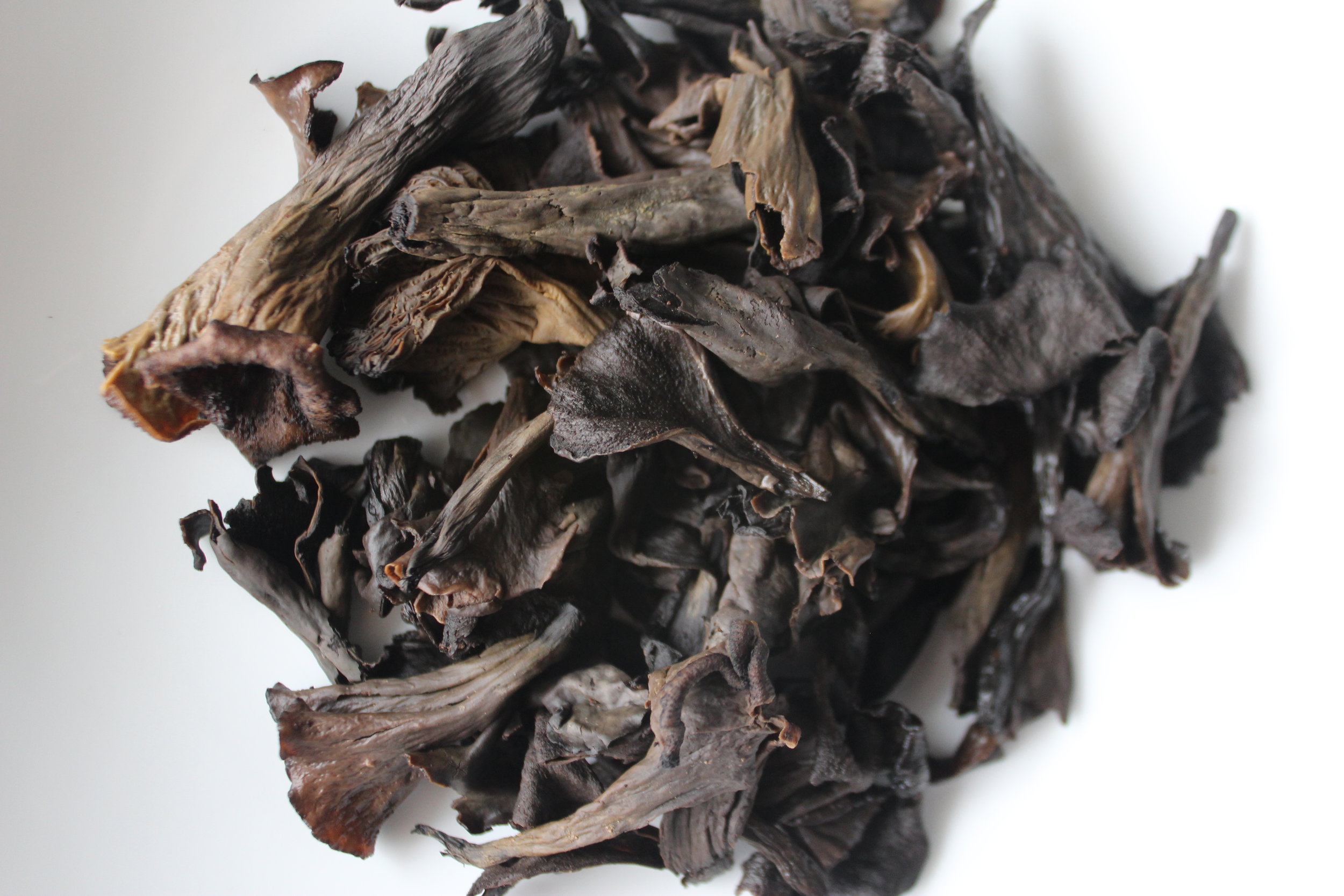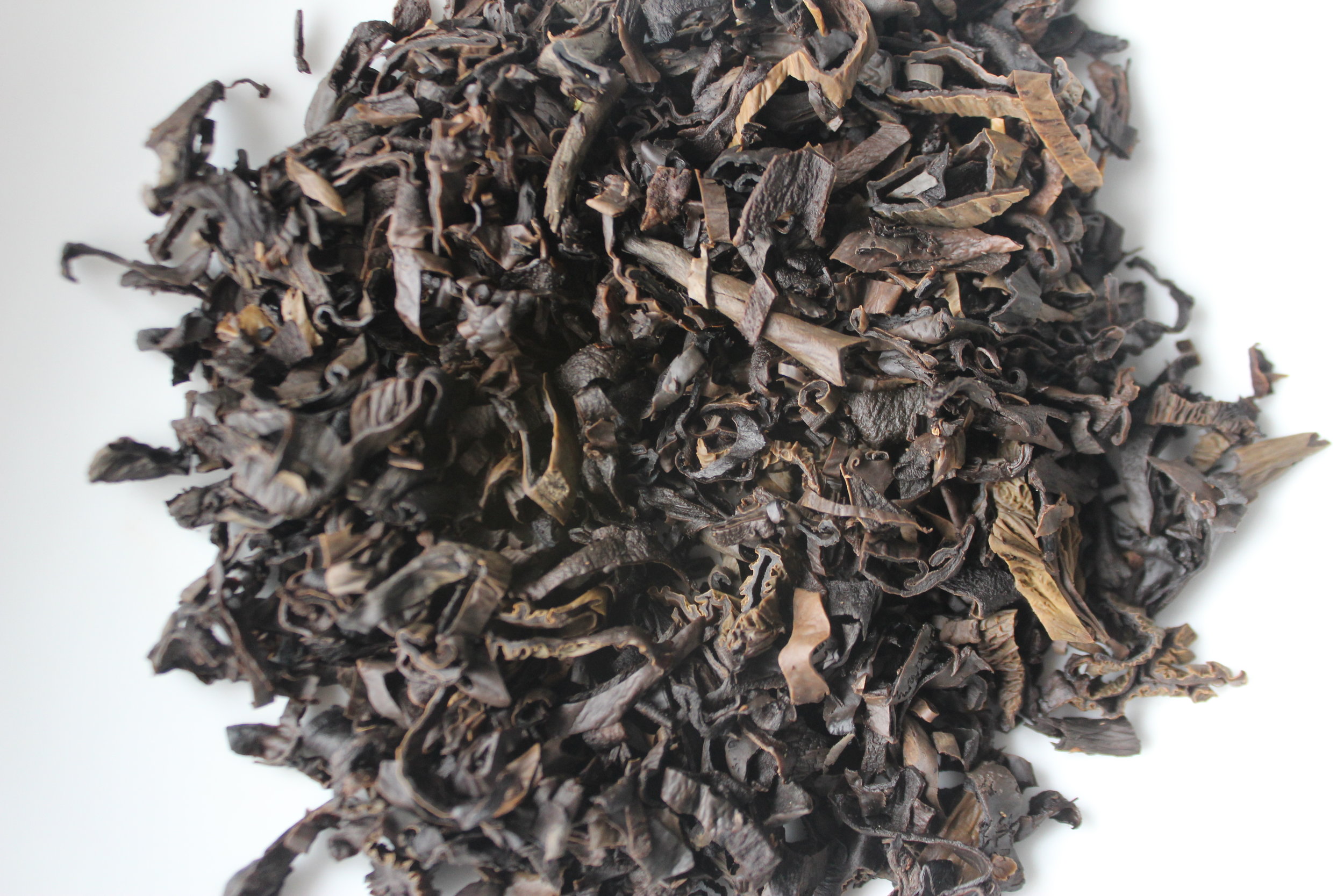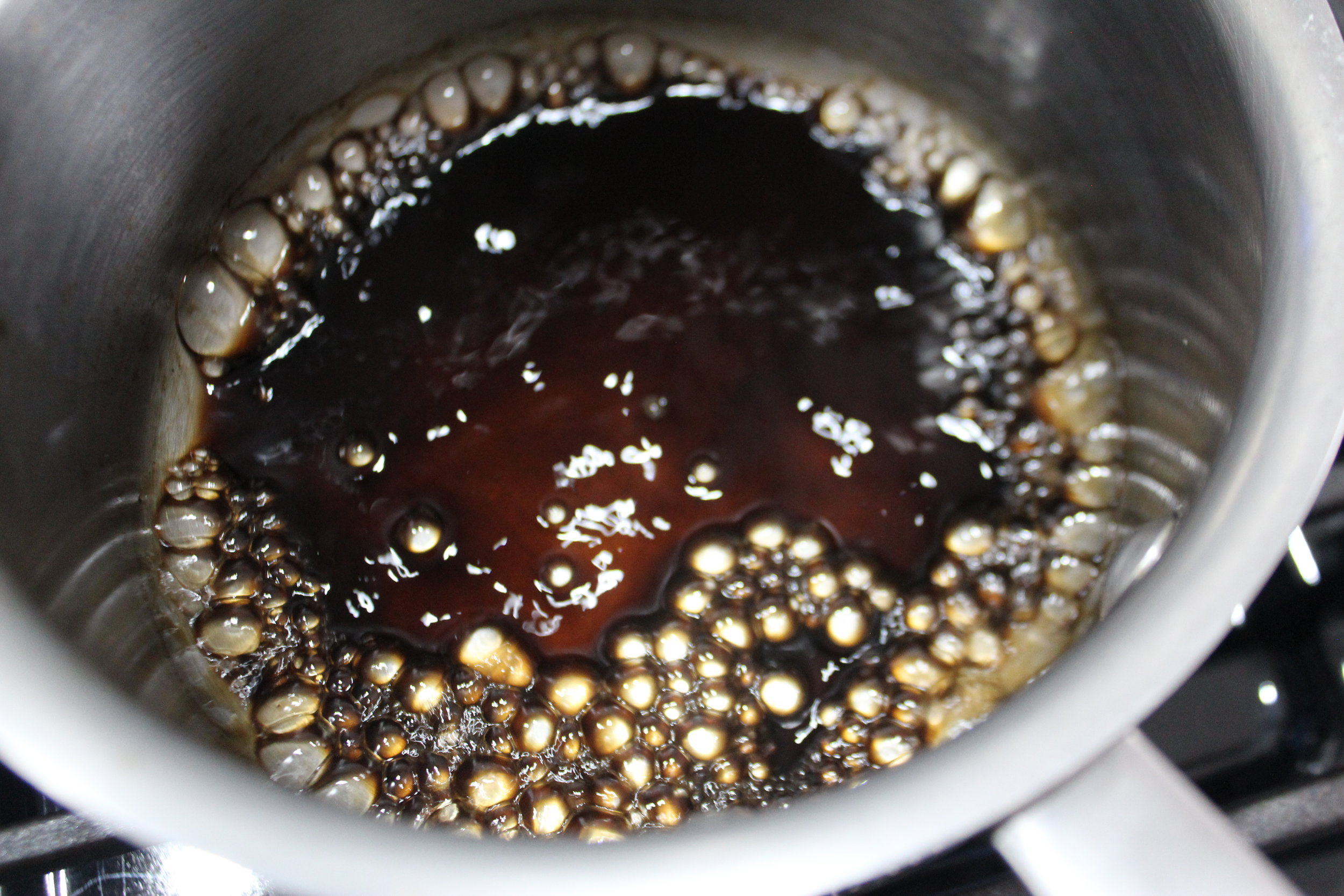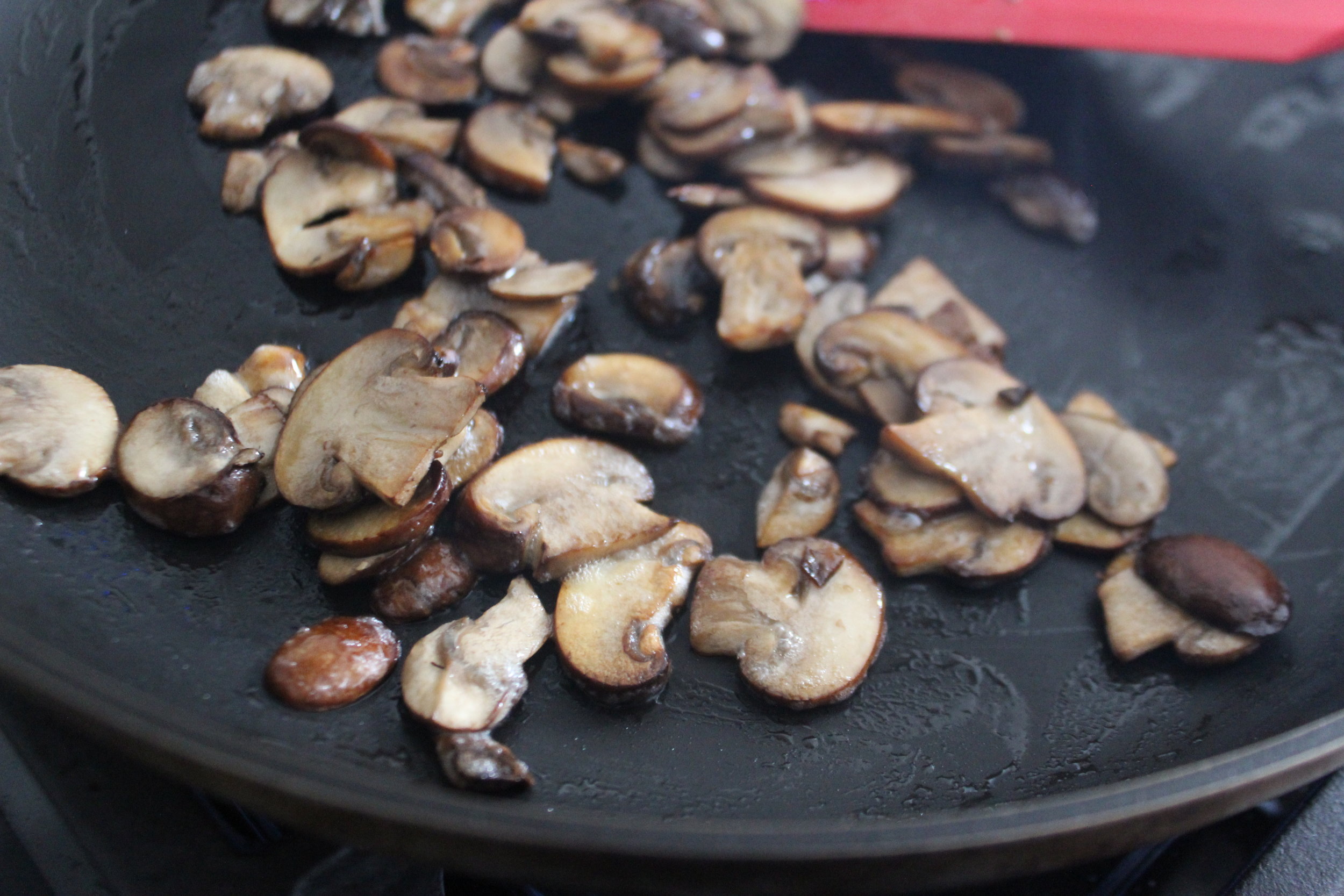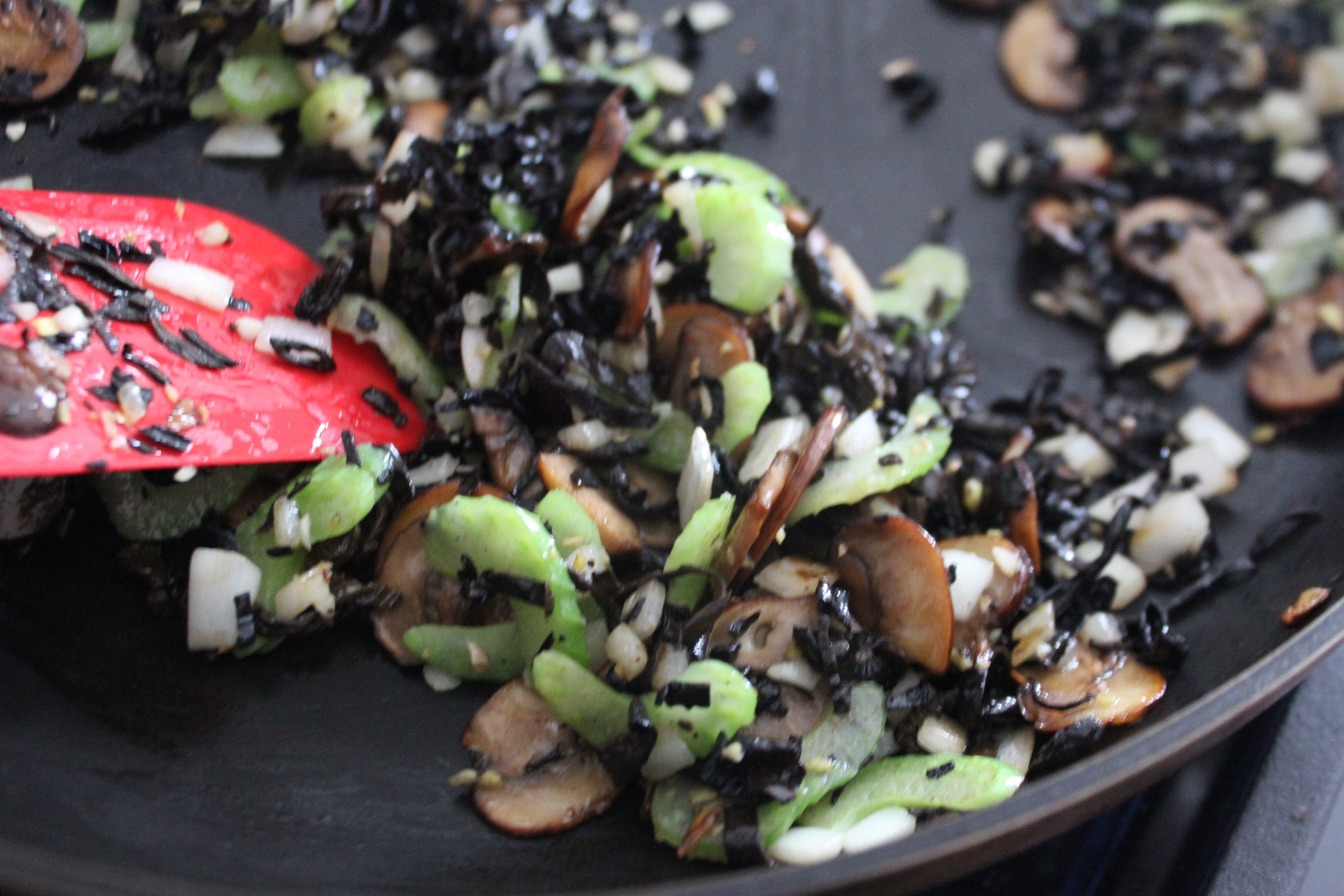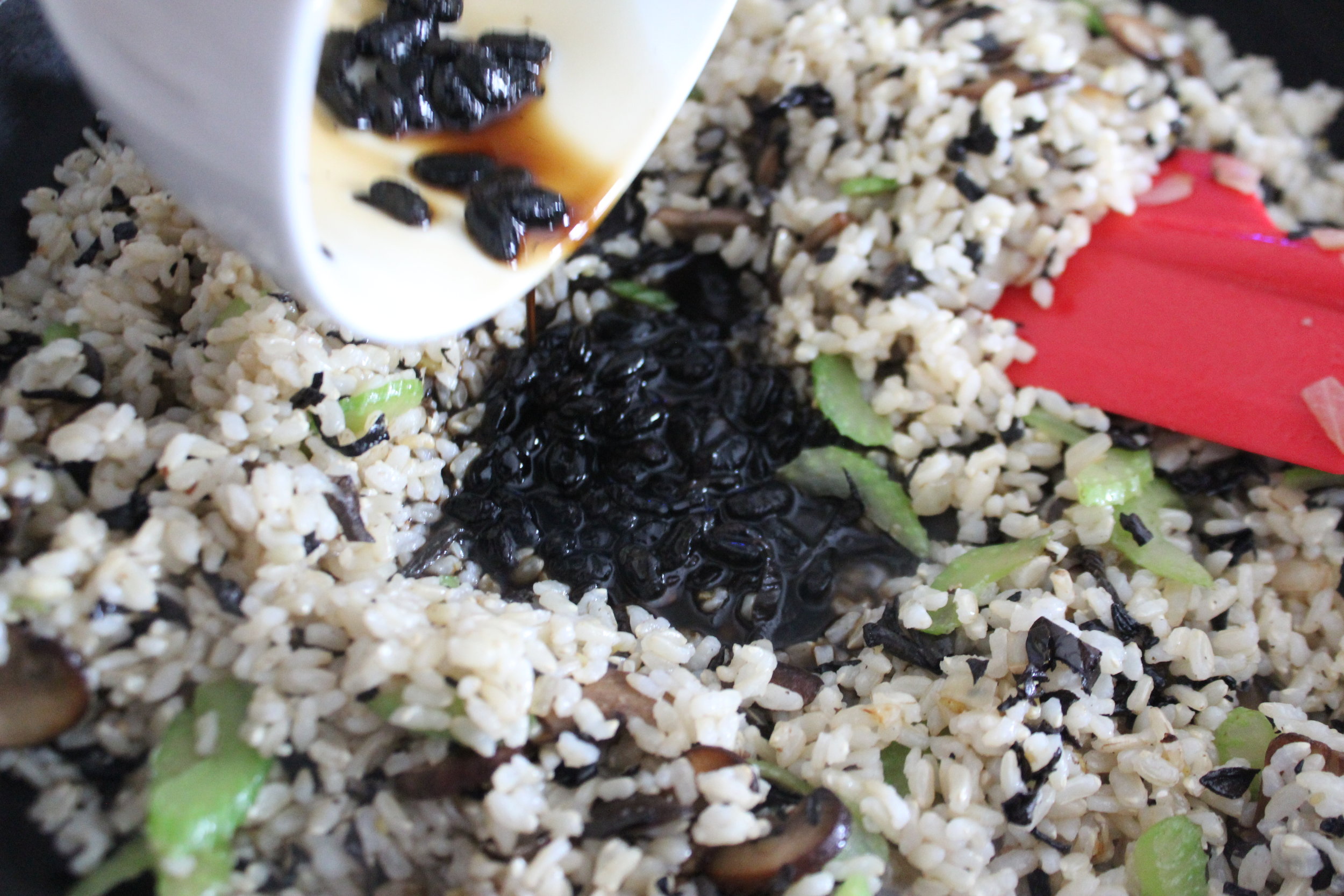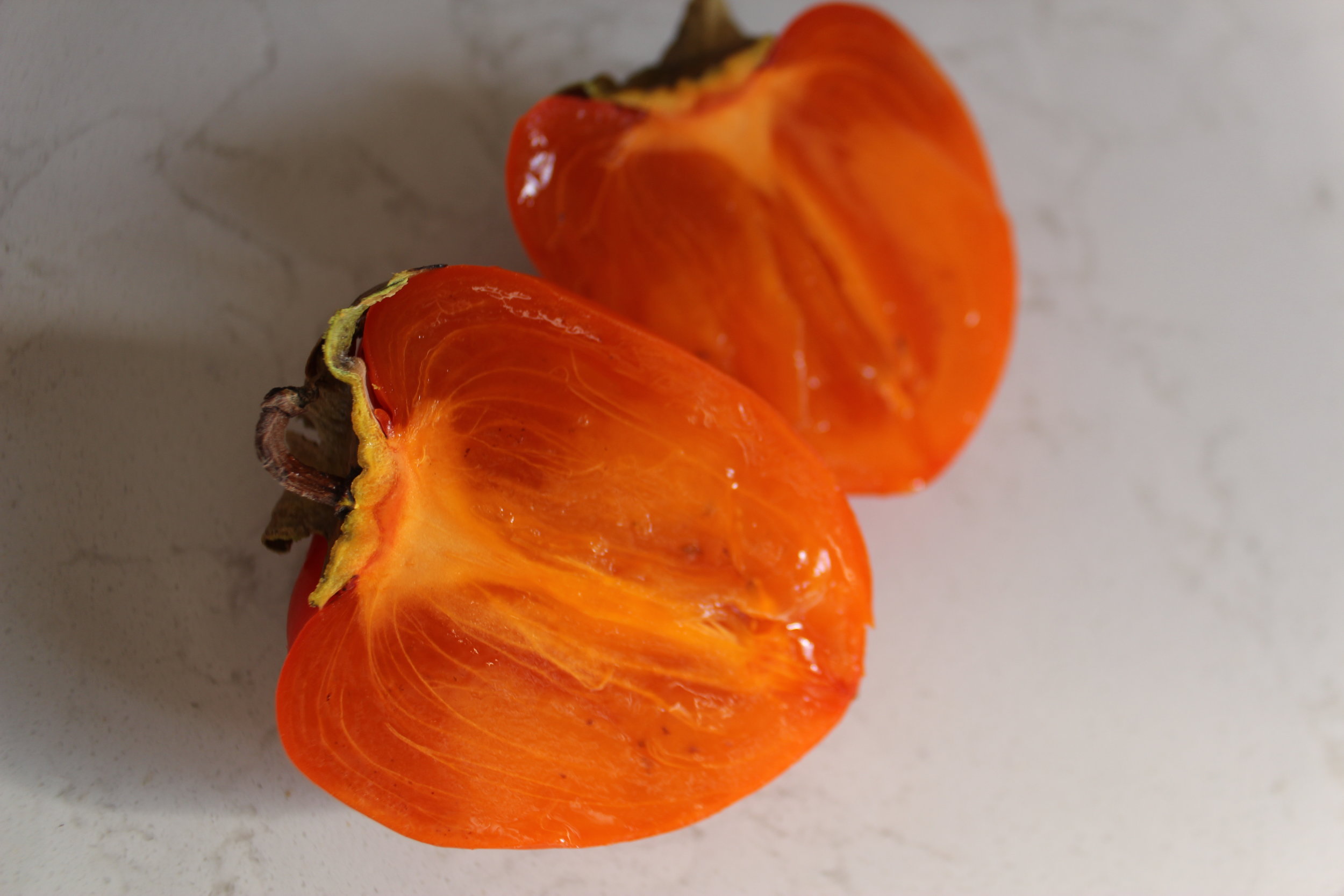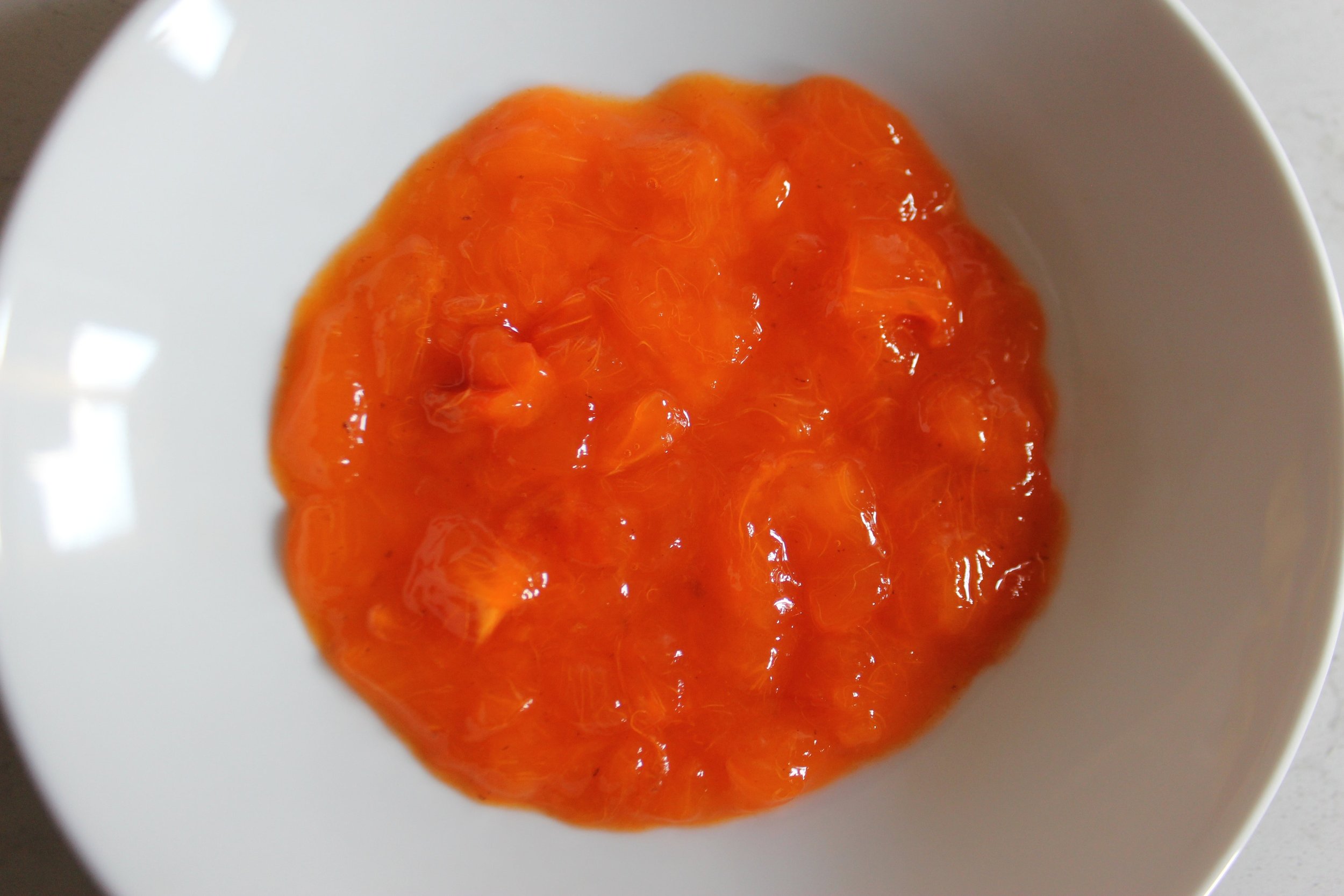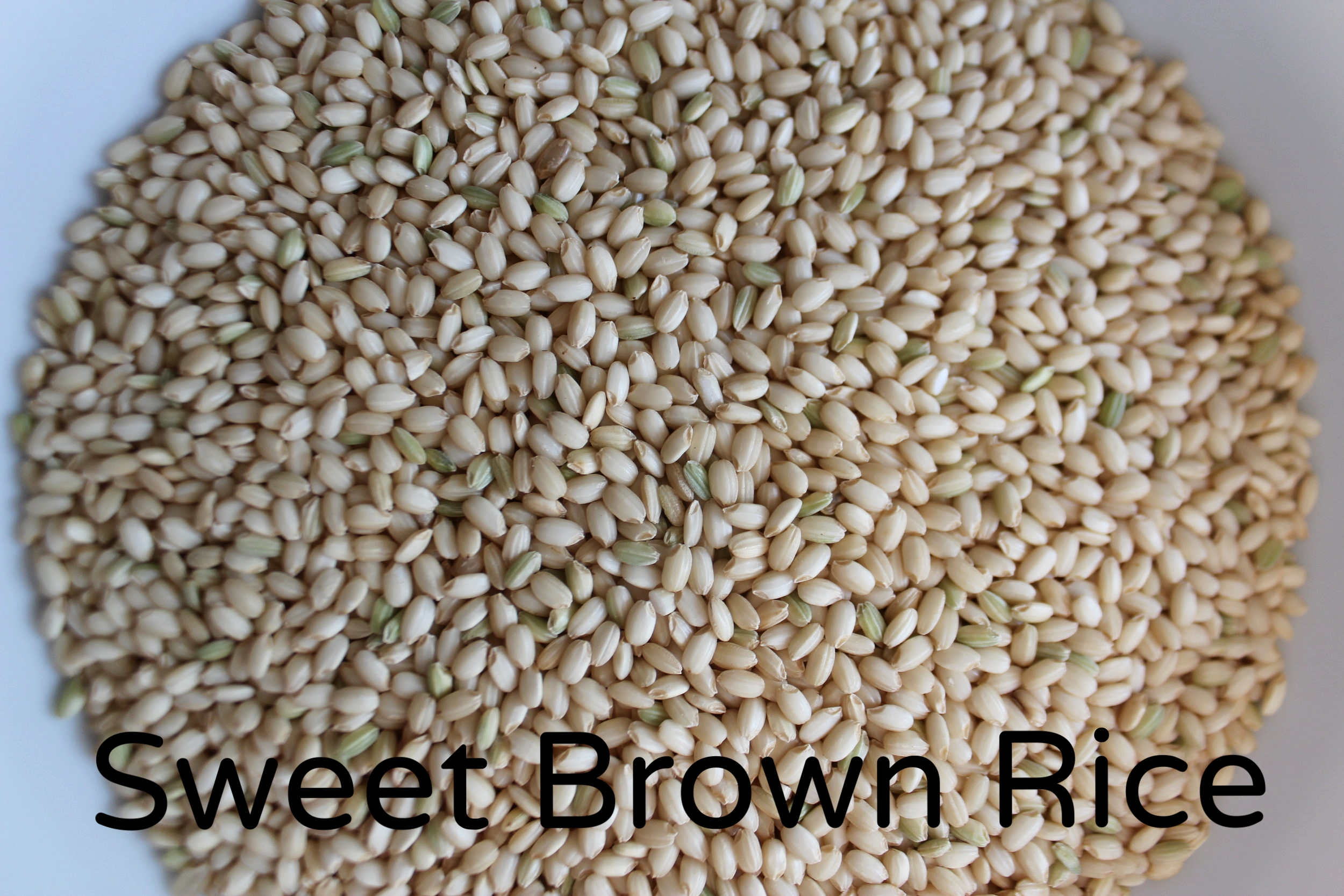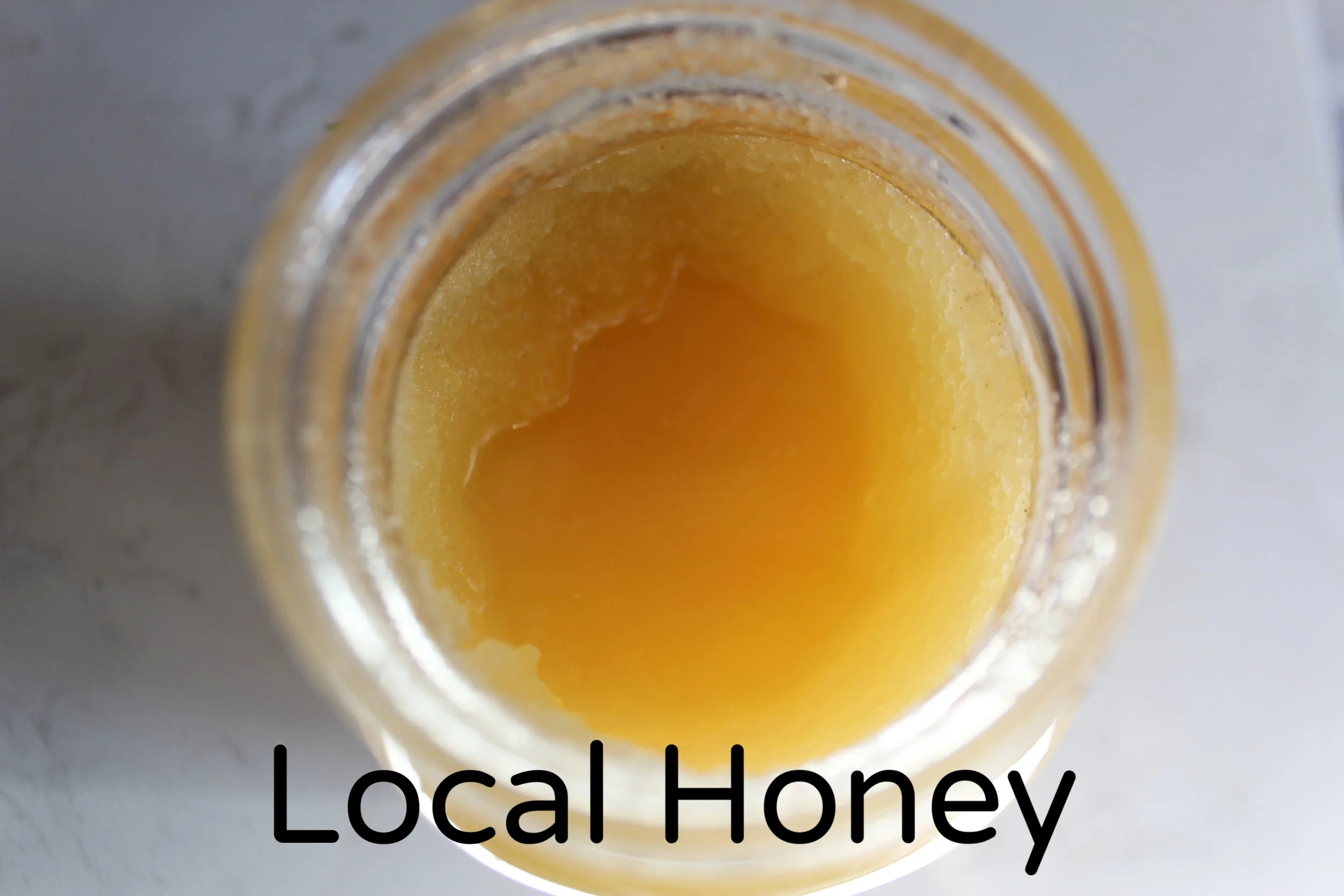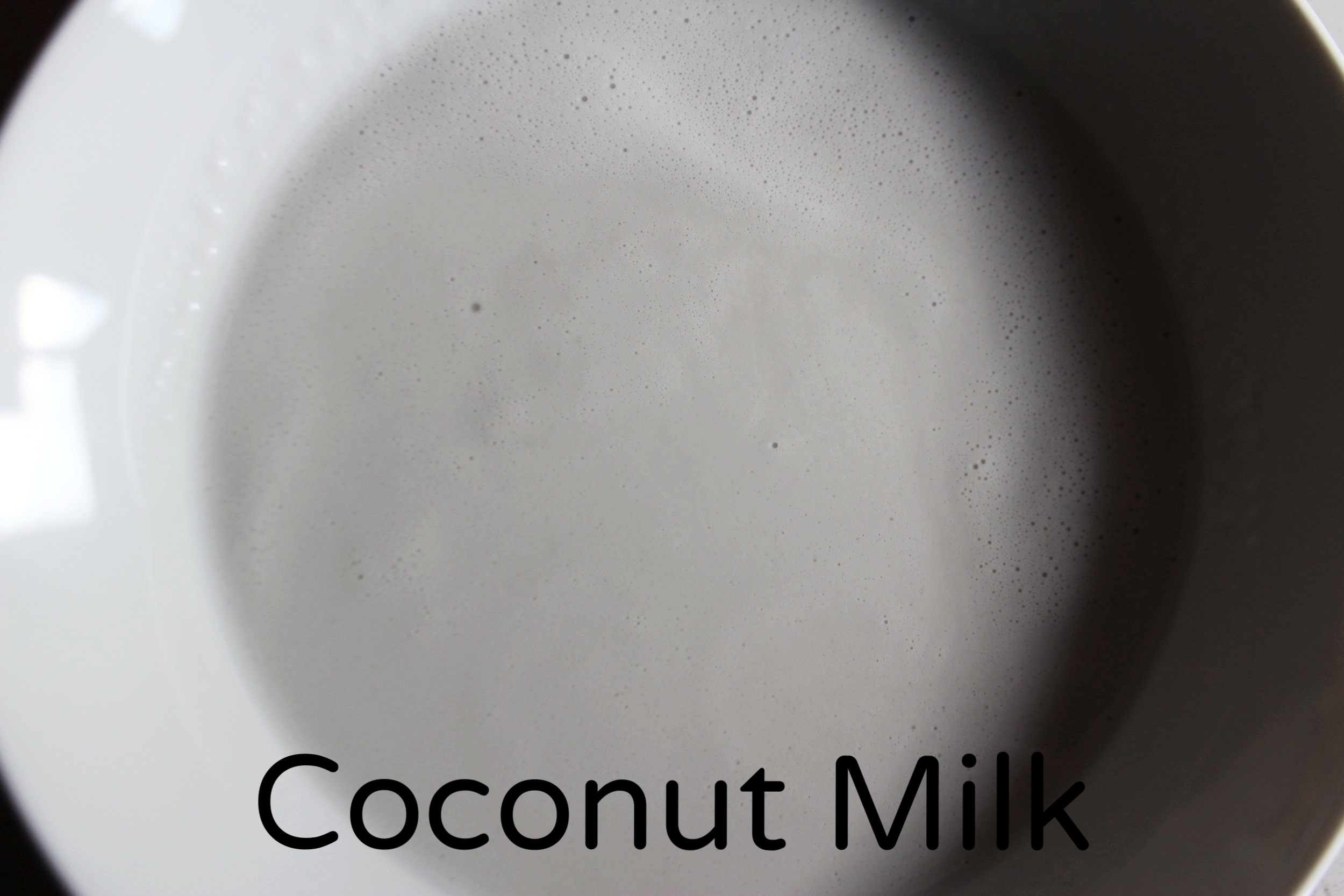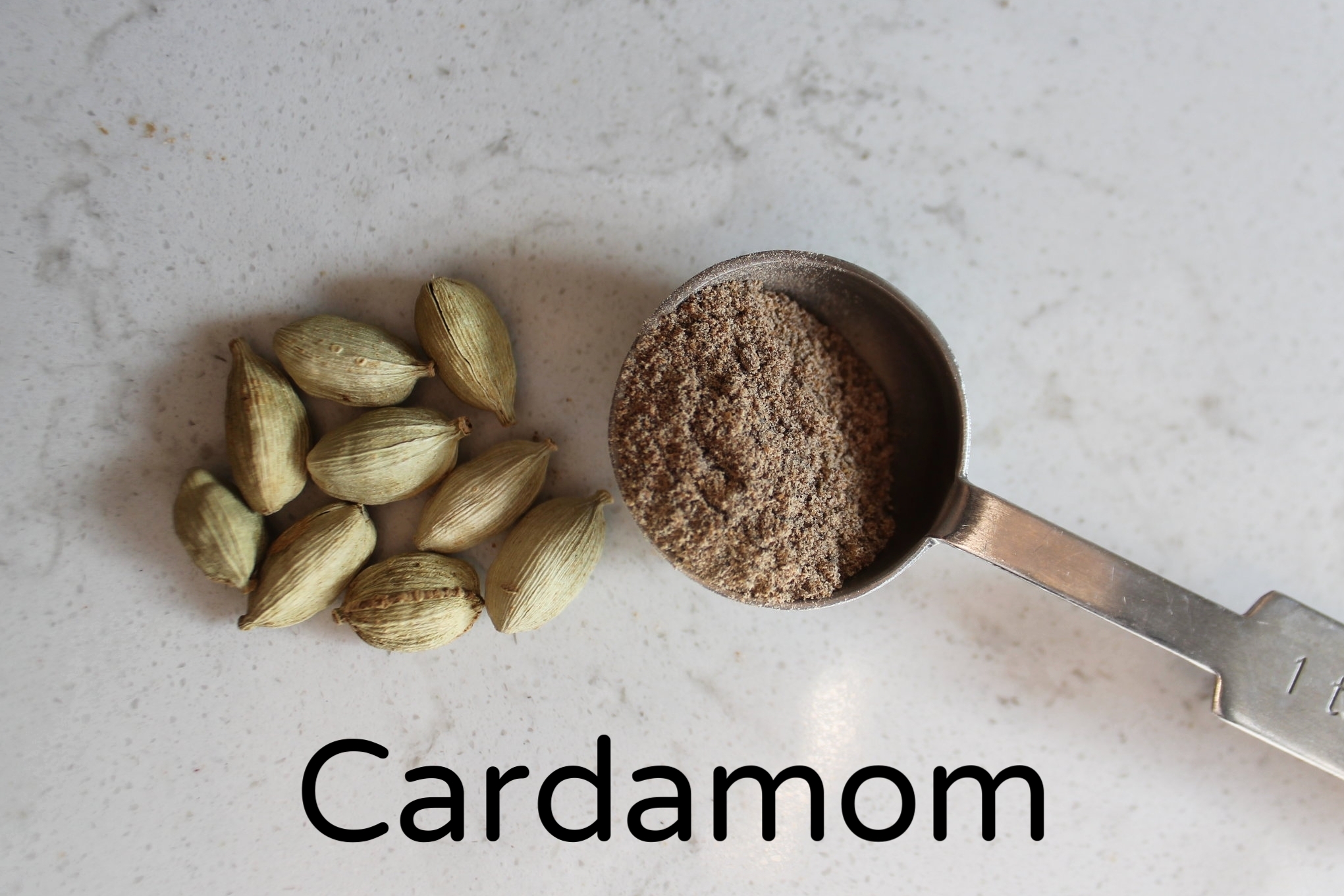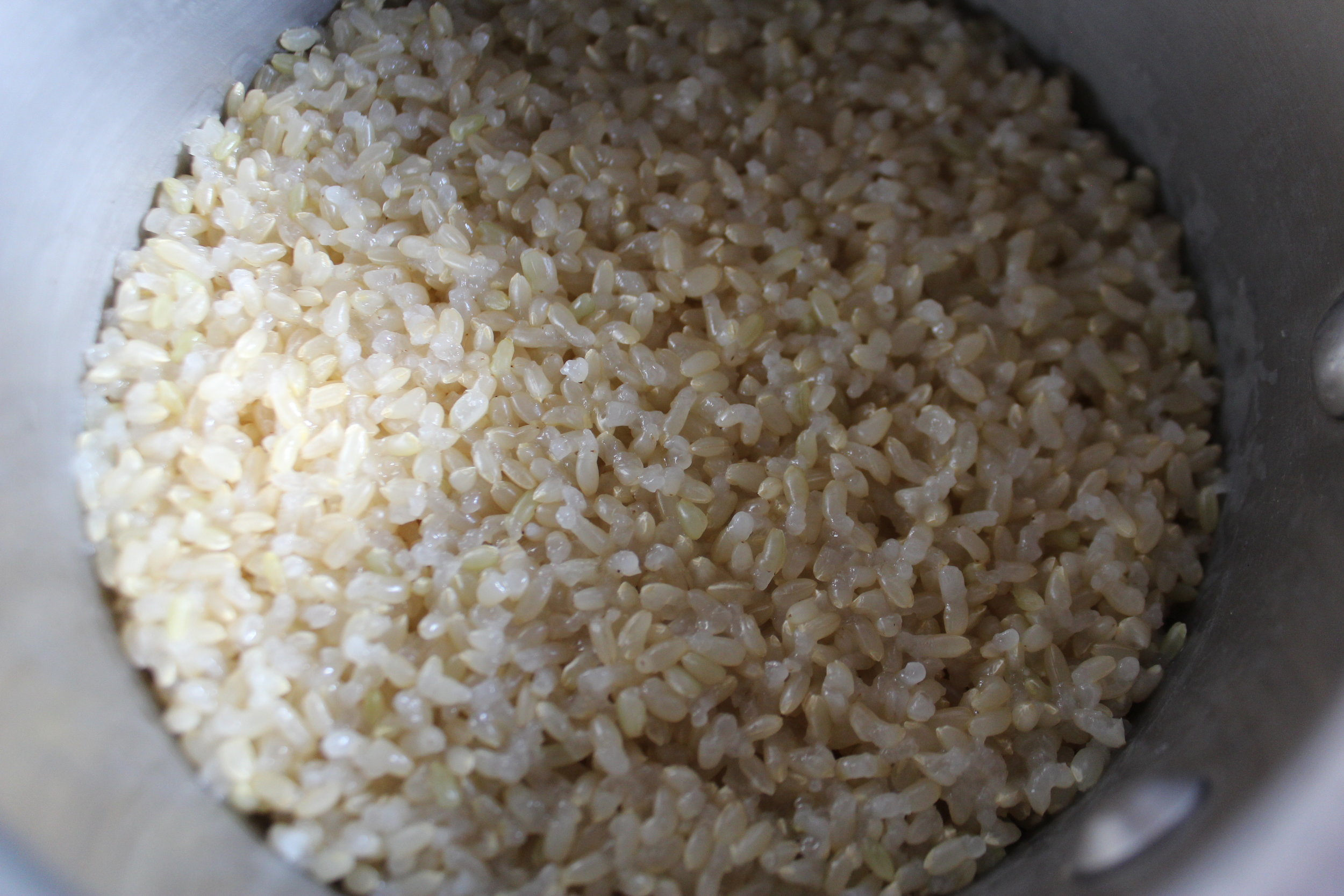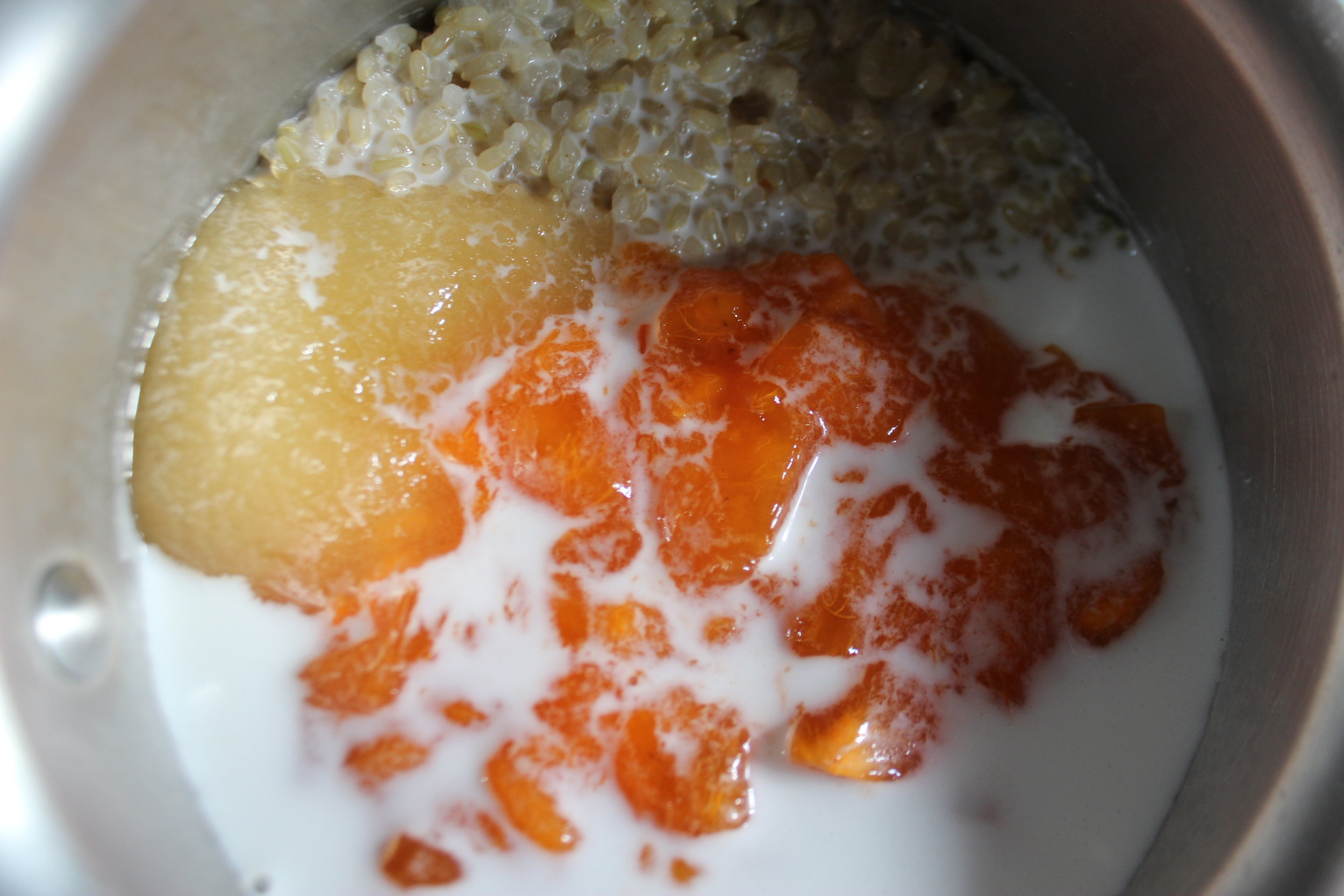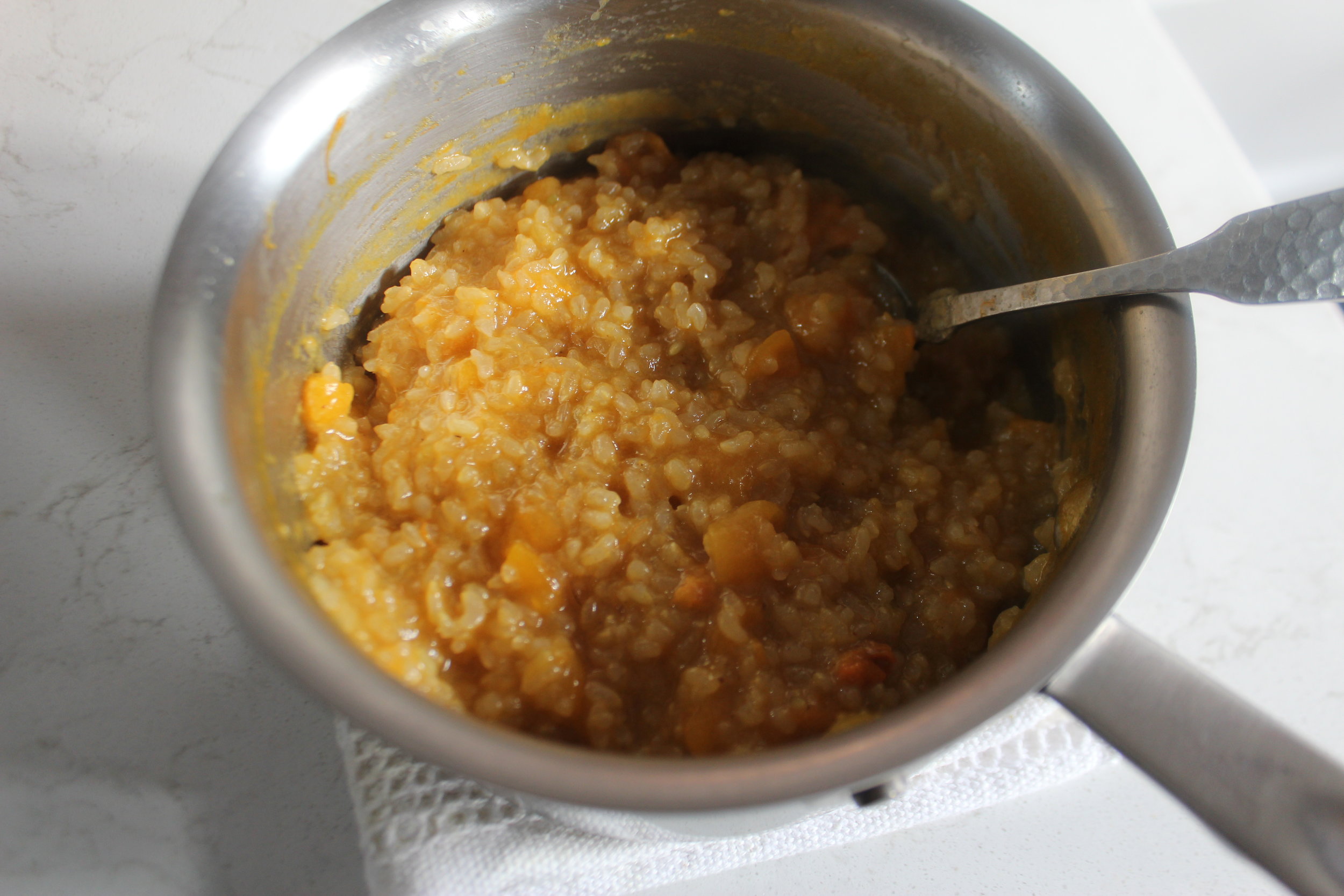Black Trumpet and Crimini Mushroom Fried Brown Rice
Time for me to join mushrooms anonymous. I know I am hitting the mycological edibles pretty hard lately (hey, that sounds like a good name for a blog, or a band...hmmm), but I have to go where the spirit takes me. This week it's a hearty heap of chewy, umami-laden brown rice. My neighbors are kind enough to sample my recipe tests, and they have reported that the flavors are, and I quote, "edibly satisfying" with five smiley faces. Now that's an endorsement! I have to agree, when only something savory will do, this might just be the thing.
I can pose a pretty good argument against the conventional wisdom that white rice, as opposed to brown rice, makes a better blank canvas for sauces, flavors, etc. I think this idea has simply become an assumption that isn't challenged often enough because there is a lack of will. Well, the chef will not abide.
Do I eat white rice? Yep. It is indeed a great sop for flavors. It's fast and delicious and needs no defending, especially on nights when I have 20 minutes to whip up dinner. This doesn't mean that brown rice isn't also a great accompaniment to sauces and flavors. One doesn't exclude the other.
I've been eeking brown back into my life, and in my life B.C. (before child) I almost never ate white rice, I ate brown. Why? Because it has lots of flavor, it's chewy and nutty, and it's delicious, that's why. And I took the time, that's why. And fiber, there is always that. Then, P.C. (post child), it became easy to make excuses for my white rice habit and I got a bit lazy. No more!
How much extra time does brown rice take? Well, considering that I cook a pot of white rice for about 15 minutes, then let it steam for another 5, and I cook a pot of brown rice for 40 minutes and let it steam for another 5, that's a little more than twice the time. I think it's worth it to plan ahead and make a pot of brown rice one night of the week that can be used multiple times. Once in a while. Just for a change. We must simply clear our minds of the notion that brown rice is somehow pedestrian. Ok, I will get off of my soapbox.
One note about the rice for fried rice. You do not want it too soft. You will find many recipes call for a 1:2 ratio of rice to water. I NEVER cook rice at this ratio. I always use slightly less. Sometimes 1/4 less, especially with white rice. This is where having a tight fitting lid comes in. If your lid leaks steam, the rice will loose TOO MUCH water, and may be crunchy. If you use too high a ratio of water to rice, it will be too soft. So, make sure you have a trusty, heavy bottomed, tight lidded pot that you always use for rice. That way the measurements for this recipe will produce perfectly chewy, separate little grains. The steaming process in the end allows the rice to absorb the last bits of moisture in the pot as well, avoiding a soupy wet texture on the outside of the rice. Having the correct cookware is always a good investment.
Now here is a fun ingredient. Fermented black soy beans. Salty, nutty, and a little sweet like miso, this ingredient is found in Chinese and Korean cuisine and dishes like Kung Pao Chicken (Gung Bao), seafood dishes, and one of my favorites, Ma Po Tofu among others. Easy to find at an Asian grocer, the whole beans are usually rinsed before using to slightly reduce the saltiness. You will also find fermented black bean paste, which I used in my recipe for Cold Udon with Roasted Black Bean Sauce.
How many types of dried mushrooms do I have in my pantry right now? Black Trumpet (seen above after soaking, and then sliced), mushroom power packed Porcini, beautiful woodsy-orange Chanterelle, pale Oyster mushrooms, and Woodear mushrooms, strange little black and grey undulations that take on an interesting texture when re-hydrated. I have yet to try the Woodear, which are not strong in flavor but prized for their texture and ability to absorb flavors. Most dried mushrooms, save the highly prized morels, are actually relatively inexpensive, and I usually use 1/4 to 1/2 oz. at a time.
Interestingly, the Black Trumpets in this recipe remind me of one of my favorite sea veggies, Arame. Arame, a type of kelp, is black and shredded like the mushrooms when prepped. Arame has a mild, sweeter taste than many other sea veggies. It is also visually striking, so I like the similar effect of the Black Trumpets in the rice.
Ok, so the rice is cooked and cooled, or maybe you cooked it the night before, good move. You have your fresh veg prepped: crimini sliced, celery, onion, ginger, garlic, maybe a little chili pepper, all ready to go. The dried Trumpet mushrooms are soaked, squeezed, and thinly sliced. We are not tossing out all the flavor of the soaking liquid, oh no. It is reduced to 2 Tbsp in volume and is a component of the finishing sauce along with the black soybeans, mirin, and soy sauce of your choosing! All that mushroomy flavor is conserved.
The fresh mushrooms need to be sauteed over relatively high heat until they have browned on the edges. This stops them from releasing water into the dish when everything else is added. Notice that the garlic is only added with the second batch of veggies so it won't have time to burn. Then the rice is added, tossed along with everything else, and finished with the sauce. If you have a nice big, well seasoned wok, this is a good time to get it out. I used a big 11 inch non-toxic, non-stick pan that I have. This recipe makes quite a heap of rice, so if you want ample leftovers make the full recipe. Cut it in half for about 3 hearty portions.
As we all know, fried rice is excellent with eggs, tofu, fish, and meats for really any meal. Stewed adzuki beans might be a nice side if you want to make a meal with beans. A nice bowl of rice and a little fruit make a lunch. Garnish the dish with peanuts, green onions, chilies, toasted nori strips, or, more of a nuclear condiment like chili oil. Yum. Enjoy!
Black Trumpet and Crimini Mushroom Fried Rice
Ingredients:
- 1 1/2 C short grain brown rice
- 2 1/2 C water
- 1/4 Tsp sea salt
- 1/2 Oz. dried Black Trumpet mushrooms
- 1 C hot water
- 3 Tbsp unprocessed peanut oil (mine was toasted peanut oil)
- 1/4 Lb Crimini or white button mushrooms
- 1/3 C onion, small dice
- 1 Stalk celery, bias cut 1/4 inch
- 1 Tbsp minced ginger
- 1 Tbsp minced garlic
- * Optional: Sliced fresh chilies or dried chilies as desired
For The Sauce:
- 3 Tbsp fermented black soy beans, rinsed
- 2 Tbsp mirin
- 2 Tbsp reduced mushroom soaking liquid
- 1 Tbsp tamari (Tamari is gluten free but Shoyu or other traditionally brewed soy sauce can be used)
Optional Garnishes:
- Peanuts, scallions, chilies, toasted nori strips, or a dollop of chili oil
*NOTE: If you can make the rice a day ahead, that will speed up the cooking time the day you make the fried rice. It will also give it a more firm texture. Allow it to cool in the same way as indicated below and store it, covered, in the fridge overnight.
Using a small, heavy bottomed pot with a tight fitting lid (really important here), rinse the rice once and drain well. Add the water and salt and bring to a boil. Cover and bring the rice down to a steady but low simmer using your lowest burner. Cook the rice for 40 minutes, making sure that all the water is absorbed by this time. Turn off the heat and allow the rice to stand with the lid on for another 5 minutes. Remove the rice to a sheet pan and spread out evenly to cool completely.
While the rice is cooking, soak the dried mushrooms in 1 C water, hot to the touch. The mushrooms will soften completely in about 20-30 minutes. Remove the mushrooms and squeeze as much liquid back into the soaking water as you can. Slice the re-hydrated mushrooms into thin shreds and set aside. Now, gently pour the soaking liquid into a small pot, being careful to leave any sediment at the bottom of the soaking liquid behind. Reduce the soaking liquid to two Tbsp over medium heat.
Prep the crimini by rubbing off any growing medium and, depending on the size, either slicing them to about 1/4 inch while whole, or halving them first, then slicing from top to bottom. Prep the onion, celery, ginger, and garlic as indicated in the ingredients, and add sliced fresh chilies or dried chilies as desired.
In a large, non-stick saute pan or wok, heat the peanut oil over medium-high heat and add the mushrooms, tossing until the edges have browned. Maintaining medium-high to high heat, add the onion, celery, ginger, garlic and chilies if using, and toss for an additional 2 minutes, until the celery is just getting tender. Add the rice and toss until it is lightly coated in the oil, sizzling, and mixed with the veggies. When the rice is hot and well mixed, add the finishing sauce. Maintain medium-high to high heat and toss the sauce thoroughly with the rice until all liquid is absorbed and cooked off, and the rice is seasoned evenly.
Serve the rice hot with your choice of garnish or chili oil. The rice will be best within 5 to 7 days. Reheating in a non-stick pan over high heat again is recommended.
Yield: 6 portions, about 5 cups.




